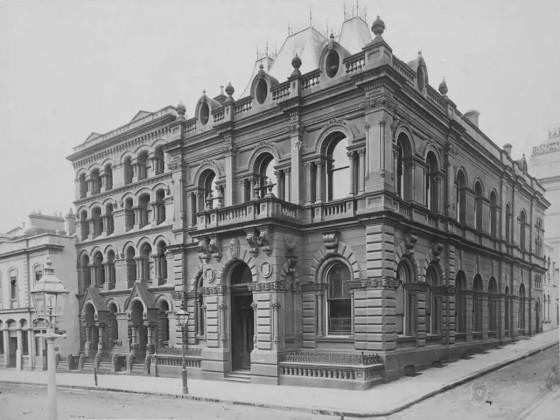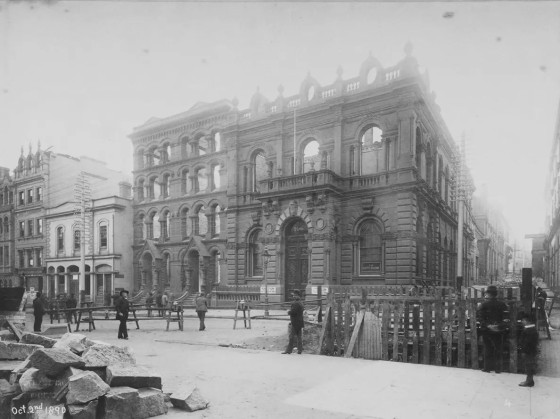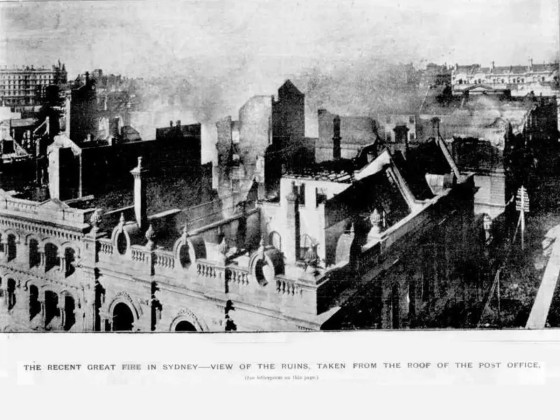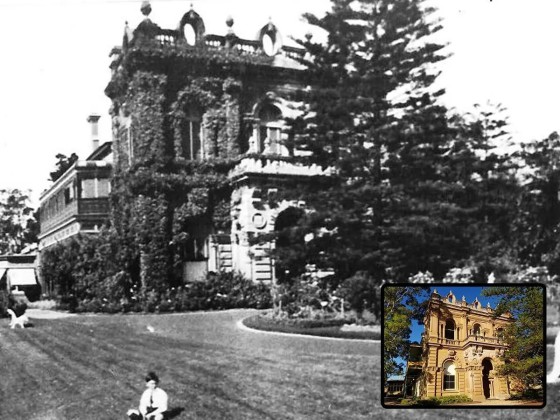Built by George Arthur and Ralph Mansfield in 1873, it was destroyed by fire in 1890 and then demolished. The bank relocated to Strathfield on the Boulevarde as "Holyrood".
Fire broke out at 2am on 2 October 1890 in the premises of Messrs. Gibbs, Shallard and Co, a printing firm on Pitt St. in Sydney. The fire, known as the 'Great Fire' - being the largest in Australia at this time - spread quickly and within two hours consumed the whole block bounded by Moore, Pitt and Castlereagh Streets and Hosking Place. The area extended over 11,000 square yards, or about 2. 25 acres. In the subsequent city improvement plans razed the ruins which cleared the way for the creation of the modern Martin Place (built on the former Moore Street).
Holyrood is a heritage listed house on the corner of The Boulevarde and Jersey Road in Strathfield, Sydney. It was built by steel industrialist Charles Hoskins as "Illyria" in c.1890 (after the fire that destroyed the original City Bank building) but was renamed "Holyrood" in 1911 by W. J. Adams (when the property became residential). The elaborate stone faade in the Baroque style came from the original City Bank building in Pitt Street, designed by George Allen Mansfield of Mansfield Brothers. The stonework was dismantled and transported in sections to the site.
The Victorian Italianate style building stands behind the faade which after 1936 became part of Catholic private school Santa Sabina College (the Dominican Sisters had established Santa Sabina College in 1894 on a six hectare site next door). It's fitting the school owns a former bank building, because you almost have to own a bank before you can afford to send your kids there.
Pictured is the original Building in 1873, and again on 2nd October 1890 before it was demolished. Another image shows the fire damage from the roof of the post office next door (source: 'The Sydney Mail and NSW Advertiser, October 11th 1890'), and the last image shows Holyrood in Strathfield.








